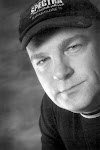I am a huge fan of using speedlights. In fact, one of the courses I teach a course at a local school, Focal Point, is on speedlight and small flash photography. Uses flashes could to light the subject is the obvious use for these units. But flashes can also be used to highlight certain areas in the image or be used to place light where there actually was none.
 The Image that I want to share today was taken a couple of weeks ago on a ranch. The weather was nice but it was still quite cold so we went into the barn to warm up. The light coming through the barn door created this beautiful light on the model. A little light reflected back onto her completed the lighting on the model.
The Image that I want to share today was taken a couple of weeks ago on a ranch. The weather was nice but it was still quite cold so we went into the barn to warm up. The light coming through the barn door created this beautiful light on the model. A little light reflected back onto her completed the lighting on the model.
The background was a different story. the background is a vacant horse stall that rendered almost black in the image. To compensate, I needed to bring in some artificial light. A single, off camera flash placed in the stall and to camera right was all that was needed to complete this image.
Create an image that has three definable layers - a foreground, background and subject or middle ground.
Composition of a photograph plays a crucial role in how successful the image is. I have talk about the rule of thirds and the golden rectangle in other posts. In this post I want to talk a little about adding depth to an image by adding a foreground.
Most images have a middle ground and a background. The middle ground is typically the subject, and the background is what is behind the subject. we know that the eye will tend to move towards the sharpest part of the image, so to draw attention to the subject you can take the background slightly out of focus using selective depth of field, causing the subject to become the main point of interest.
This technique works great when the subject is close, as in a head and shoulders shot, but what happens when you want to show more of the environment in the image. Does it all become background? Sometimes, but a more effective technique is to have a foreground in the image.
Having a foreground will create a space in which the subject resides. Effective use of the foreground will help give the image a more pictorial feel, giving the viewer more information about the subject and the environment it is in. It can also be helpful in directing the viewers attention toward the subject, helping it stand out even more inside the image.
 This image was designed to show the area in where this family liked to spend time together. It is a beautiful area in North Vancouver. with some of the family moving away, this image gave them a way to stay connected by showing them together as well is showing off the environment. Notice how the leading lines of the railing and the grate work in the foreground bring your attention to the group while the river gives your eye a chance to explore the rest of the image before bringing your eye back top the group.
This image was designed to show the area in where this family liked to spend time together. It is a beautiful area in North Vancouver. with some of the family moving away, this image gave them a way to stay connected by showing them together as well is showing off the environment. Notice how the leading lines of the railing and the grate work in the foreground bring your attention to the group while the river gives your eye a chance to explore the rest of the image before bringing your eye back top the group.
Some techniques used in creating an effective foreground include depth of field, leading lines, repeating patterns and congruity with the background. The goal when deciding on your foreground is to make it add to your image without it being overpowering.
Photograph a tree. It can be abstract - just photograph a tree.
 The Image that I want to share today was taken a couple of weeks ago on a ranch. The weather was nice but it was still quite cold so we went into the barn to warm up. The light coming through the barn door created this beautiful light on the model. A little light reflected back onto her completed the lighting on the model.
The Image that I want to share today was taken a couple of weeks ago on a ranch. The weather was nice but it was still quite cold so we went into the barn to warm up. The light coming through the barn door created this beautiful light on the model. A little light reflected back onto her completed the lighting on the model.



